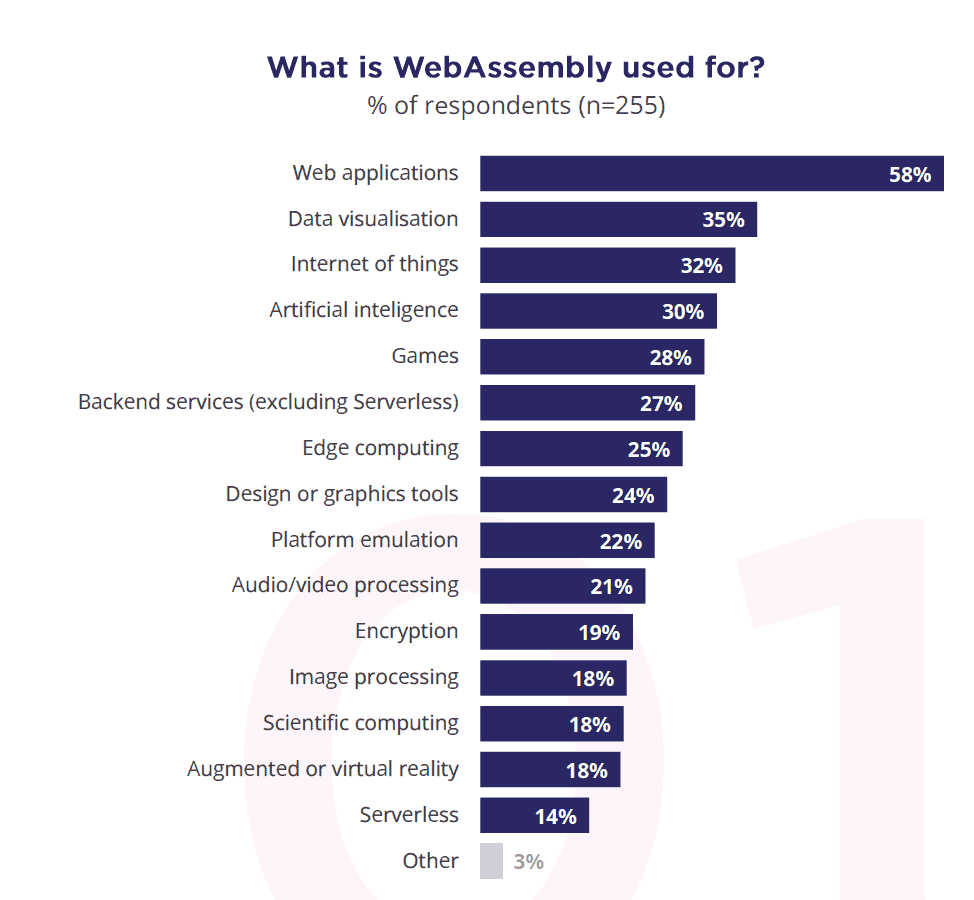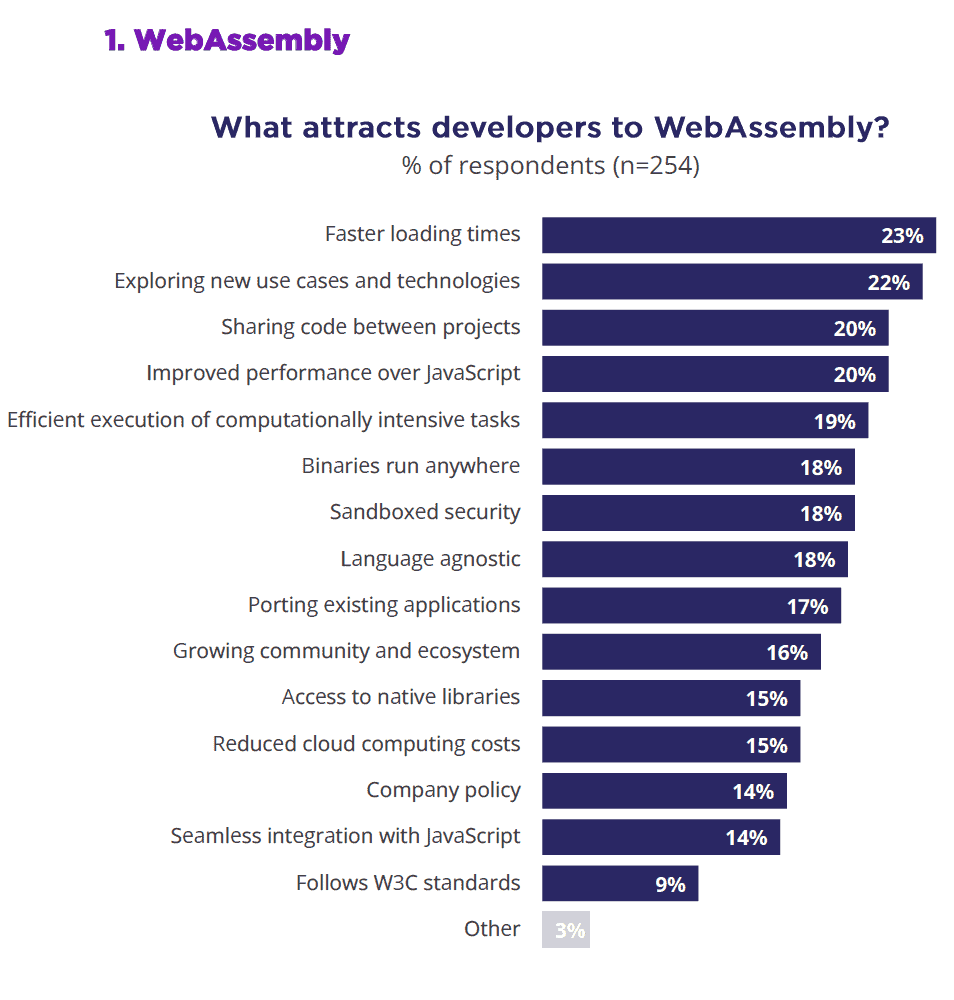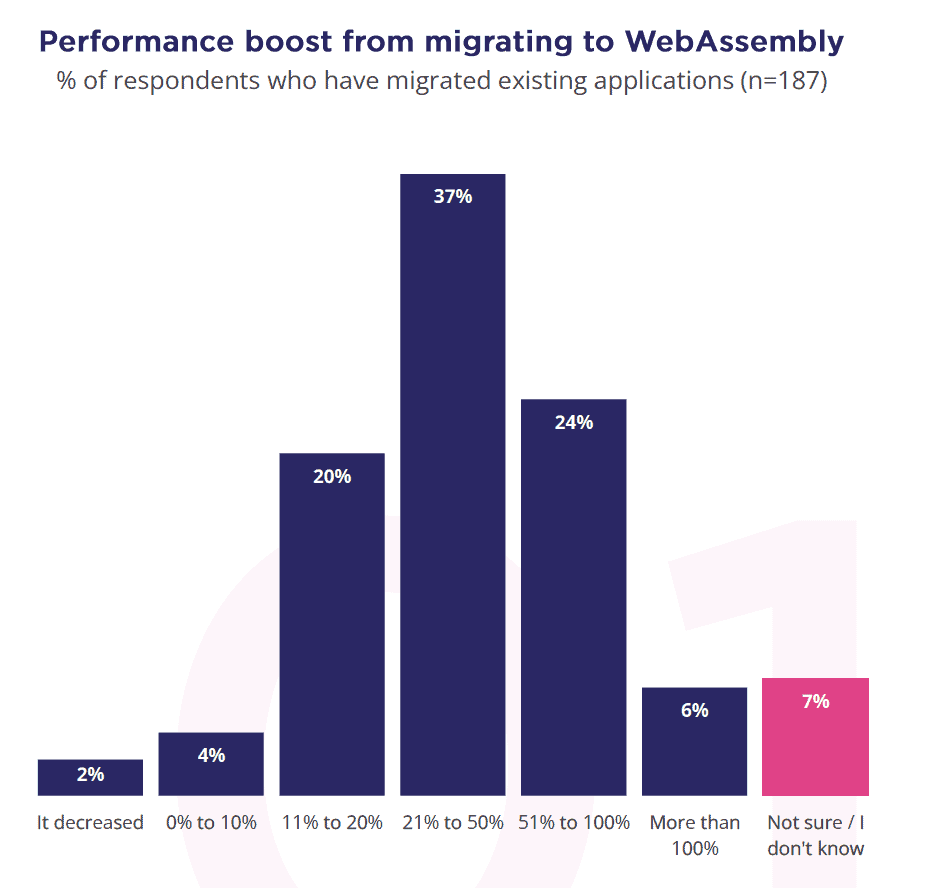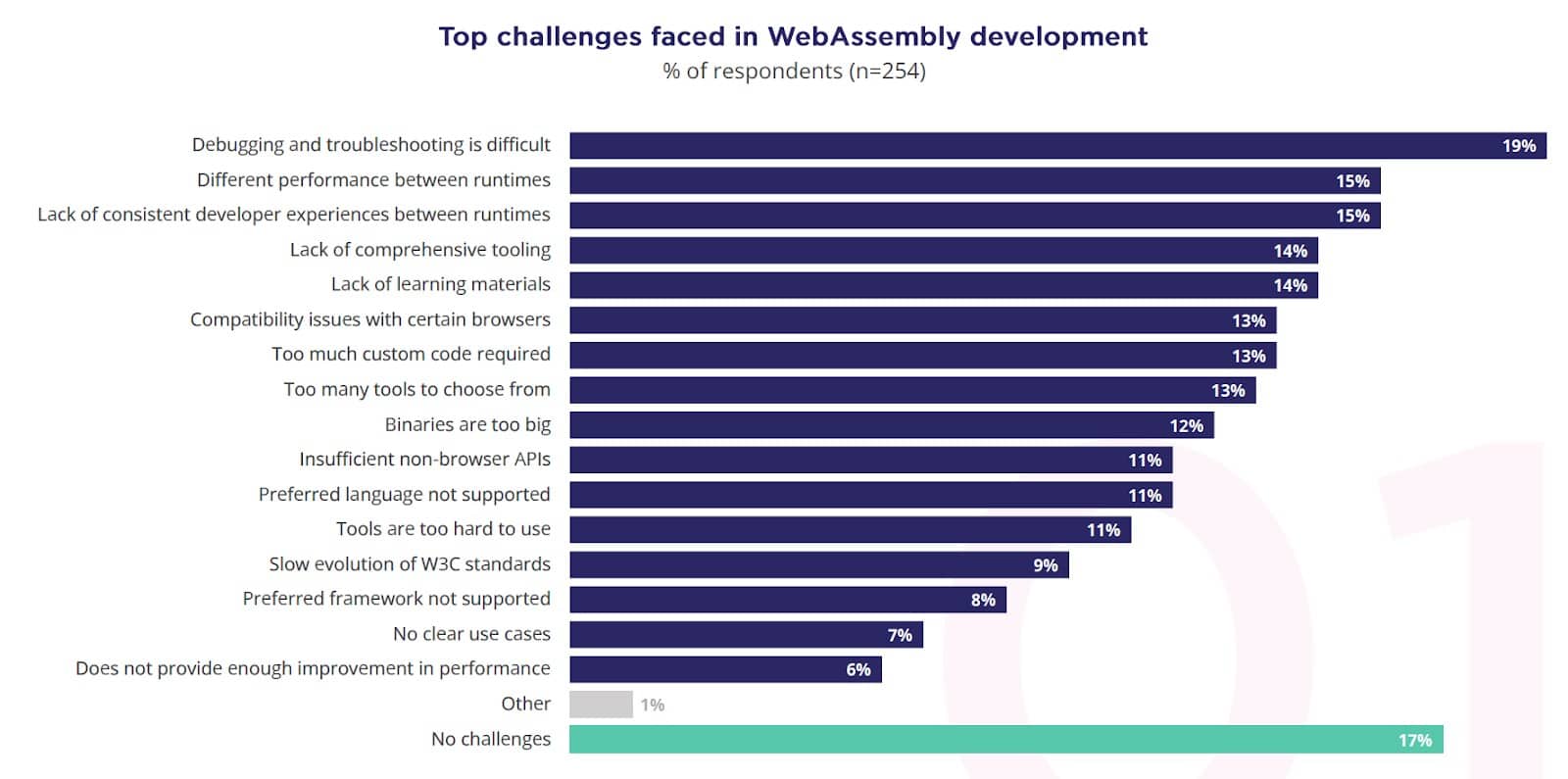While WebAssembly (Wasm) is still primarily used to develop web applications, its use is expanding far beyond its original use case as part of the open web platform, according to the State of WebAssembly 2023 report developed for CNCF by SlashData. Some 58% of Wasm users say they are using the technology for web applications, but other growing areas include data visualization (35%), Internet of Things (32%), artificial intelligence (30%), backend services (excluding serverless) (27%), and edge computing (25%).

These new use cases indicate that Wasm is moving far beyond front-end web development. Looking at the new Wasm landscape, which launched today, demonstrates the technology in use in cloud native application frameworks, orchestration tools, and runtimes in projects like containerd, CRI-O, Kubernetes, wasmcloud, WasmEdge, and more. Learn more about the Wasm landscape, which includes 11 categories and 120 projects or products and represents $59.4B in total economic value, in a detailed blog here.
These findings are similar to those in our recent Wasm Microsurvey, although serverless led the way at 63%, followed by edge technologies (54%) and web applications (52%).
According to SlashData, the most significant benefits attracting developers to Wasm are faster loading times (23%), opportunities to explore new use cases and technologies (22%), and sharing code between projects (20%).

Wasm users also reported significant performance boosts. When migrating existing applications to new languages in Wasm projects, 37% of respondents reported observing performance increases between 21% and 50%.

Performance improvements were consistent with our Wasm microsurvey, which saw the biggest leap in performance, a 50% increase, experienced by one-fifth of survey participants, while the biggest single group, 37%, said they saw a gain of 10% over existing performance.
But as with any technology, Wasm isn’t without some challenges. The top challenges faced by Wasm users in SlashData’s report were difficulties with debugging and troubleshooting (19%), as well as different performance and a lack of consistent developer experience between runtimes (both at 15%). At the same time, 17% of respondents did not face any challenges.

The survey reached 255 respondents who use WebAssembly and was conducted between June 21 and August 4.
Read the full report for much more data and learn about the performance boosts seen from migrating to Wasm, the languages used for Wasm applications, and how developers plan to use the WebAssembly System Interface (WASI).
The Wasm community is gathering this week, September 6-7, at WasmCon 2023 in Bellevue, Washington. View the schedule and join the event virtually!